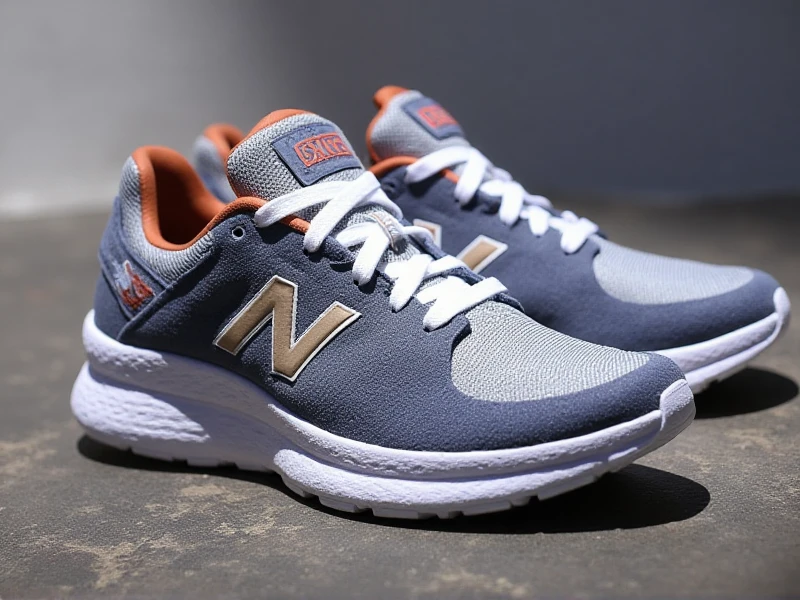
The Ultimate Guide to Finding Your Perfect Women's Running Shoes
2025-06-11
Here is an SEO-optimized article on women's running shoes, written naturally and designed to engage readers while ranking well:
Choosing the right running shoes isn't just a matter of style; it's about comfort, support, and preventing injuries, especially for women whose biomechanics can differ significantly. Whether you're training for a marathon, tackling trail paths, or enjoying daily jogs, investing in the best women's running shoes is crucial. This guide delves into what makes a running shoe suitable for the female foot and how to select your ideal pair.
Why Women's Running Shoes Aren't Just Smaller Versions
Contrary to a common misconception, women's running shoes aren't simply scaled-down versions of men's. Several physiological differences call for specific design considerations:
1. Foot Shape: Generally, women tend to have narrower heels relative to the forefoot and a different arch structure distribution compared to men. Quality women's running shoes feature a last (foot model) designed specifically for the average female foot, offering a more secure heel cup and appropriate midfoot width.
2. Weight Distribution: Women typically have a lower body mass and distribute weight differently during the gait cycle (running stride). This influences how cushioning and stability elements need to be positioned within the shoe.
3. Biomechanics: Women often experience greater knee valgus (inward knee movement) and hip internal rotation during running. Support features in running shoes for women can help mitigate this, promoting better alignment and reducing stress on joints.
4. Cushoning Density: Due to lower average body weight, the cushioning foam in women's models is often engineered to be slightly softer at equivalent stack heights to provide the optimal level of compression and responsiveness.
Key Features to Look for in Your Next Pair
Understanding your running style (gait) and foot type is paramount. Here’s what to prioritize:
Fit is Paramount: This cannot be overstated. Visit a specialty running store later in the day (when feet swell slightly) for a professional gait analysis and fitting. Ensure adequate space (about a thumbnail’s width) between your longest toe and the end of the shoe. Width options are often crucial; don't cram into narrow shoes.
Support Level: Choose based on your arch and pronation (how your foot rolls inward on landing):
Neutral: For efficient runners with minimal pronation. Offers cushioning without extra medial support. Great for women with higher arches.
Stability: For mild to moderate pronators. Incorporates features like dual-density midsoles to guide your foot safely through the stride. Suitable for medium/low arches.
Motion Control: Maximum support for severe overpronators, generally bulkier and often feature plated medial posts. Best for very low/flat arches.
Flexibility: Crucial for natural foot motion.
Cushoning Technology: Do you prefer soft, plush cloud-like landings ("max cushion") or a firmer, more responsive ("energized") feel? Midsole foam technology (EVA, TPU like Peba, Pebax) advances rapidly – consider the type of runs you do most. Look for brands heavily investing in innovative cushioning for women's running shoes.
Heel-to-Toe Drop: This is the height difference between the heel and forefoot. Traditional drops (~10-12mm) ease strain on the Achilles/calf, while lower drops (0-8mm) promote a more natural midfoot/forefoot strike but require some adaptation. Choose based on comfort and running experience.
Outsole Traction: Consider your primary terrain. Road shoes have softer rubber for pavement, while trail running shoes for women feature aggressive, multi-directional lugs for mud, rocks, and roots.
Breathability: Mesh uppers are standard for ventilation. Look for engineered mesh or knit variations for targeted breathability and structure without excess weight.
Durability & Weight: Balance your need for a robust shoe that withstands miles with the desire for lightweight speed.
Beyond the Basics: Modern Innovations
Manufacturers constantly innovate to enhance the experience for female runners:
Improved Fit Systems: Asymmetrical lacing, stretchable tongue designs, gusseted tongues, and diverse lacing patterns provide a secure, pressure-free lockdown specifically adapted to the female foot shape.
Cushioning Tuned for Impact: Brands like Brooks DNA Loft, Asics FlyteFoam, Nike React, Saucony PWRRUN , Hoka Profly , and Adidas Lightstrike/Prime X formulations focus on durability and shock absorption optimized for lighter weights.
Sustainability Focus: Eco-conscious runners can find many women's running shoes incorporating recycled materials like plastic bottles into uppers and cushioning components without compromising performance.
Heightened Specificity: The market offers highly specialized options, from ultra-cushioned max-road shoes to super-responsive racing flats and burly trail runners – all designed with the female anatomy and needs in mind.
Finding Your Sole Mate
There's no single "best" running shoe; the perfect pair is entirely individual. Don't rely solely on reviews – what works brilliantly for one runner might be terrible for another. Prioritize:
1. Get professionally fitted and analyze your gait.
2. Know your foot type (arch height) and common pronation.
3. Consider your primary running surface, distance goals, and preferred cushioning feel.
4. Try on several models and brands! Run around the store or on a treadmill if possible.
5. Replace worn-out shoes every 300-500 miles to maintain optimal support and cushioning, preventing overuse injuries.
Investing the time to find the right women's running shoes transforms running from a potential chore into a comfortable, supportive, and joyful experience, helping you achieve your mileage goals safely and effectively. Pay attention to the unique needs of the female foot and stride to unlock your best run yet. Lace up, explore your options, and hit the ground running!
CATEGORYS: